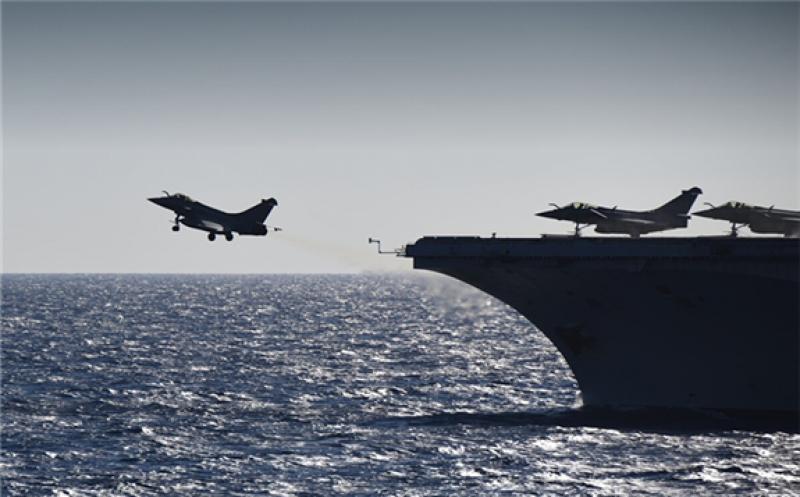French President Emmanuel Macron announced on Dec. 8 that his country’s next aircraft-carrier will be nuclear-powered and should be operational by 2038 in time to replace the Charles de Gaulle, which entered active service in 2001.

The new aircraft carrier is expected to be the biggest warship France has ever built. Florence Parly, the armed forces minister, said in October that the ship, whatever its propulsion, would be designed to deploy the future combat aircraft system (FCAS) and today her ministry confirmed that the vessel would deploy about 30 of these aircraft “which will be bigger than the Rafales.”
The ministry said the ship would be in the 75,000 tonne class (82,673 tons), be around 300 meters long (984 feet) and be able to sail at 27 knots (31 mph), even bigger than the second aircraft carrier that Naval Group was working on in the early 2000s until that program was shelved by the government for lack of money. In comparison, the Charles de Gaulle is 261m (856 feet) long and weighs 42,000 tonnes (46,297 tons) fully loaded. The new ship will have a crew of about 2,000, including the air group.
Speaking at Framatome, France’s principal nuclear-power company headquartered at Le Creusot in the centre of France, Macron announced just four minutes before the end of his 28 minute speech that he had “decided that the future aircraft-carrier which will serve our country and our navy will, like the Charles de Gaulle, be nuclear-propelled.”
It will have two K22 power generators each generating 220 megawatts (hence the 22) derived from the K15 (that generate 150 MW each) that currently power the Charles de Gaulle.
Naval Group, which is the prime contractor for these major ship-building projects, immediately issued a statement hailing the decision, pledging to work with its major industrial partners Chantiers de l’Atlantique, TechnicAtome and Dassault Aviation.
Pierre Eric Pommellet, chairman and CEO of Naval Group, said, “We are delighted with the announcement (…) which will enable France to maintain its position in the very restricted circle of major powers holding a nuclear aircraft carrier.”
Echoing what Macron had said in his speech, Pommellet stressed the importance of projects like this to “ensure the continuity of our skills” and of developing innovative solutions “in the fields of propulsion and high added-value military systems, thus maintaining France’s technological lead and its position as a key geostrategic player.”
Now that the nuclear option has been chosen to power France’s new aircraft carrier, other major decisions will have to be taken, notably concerning the catapults which are a vital part of the project. France has no expertise in this highly specialized technology and so will have to import the catapults from the United States, as it has done for the past 60 years. Those on the Charles de Gaulle are steam-powered, but those on the new aircraft carrier will be electromagnetic.
Naval Group and its partners will now start a two-year preliminary design study, which sources said may use a number of the ideas that had been worked on for the aborted second aircraft carrier. That will be followed by more detailed plans with the development phase expected to finish at the end of 2025 at which point the ministry will order the ship. The design phase up to the end of 2025 is expected to cost some €900 million ($1.09 billion) of which €117 million ($142 million) will be spent in 2021.
This article is reproduced at www.defensenews.com